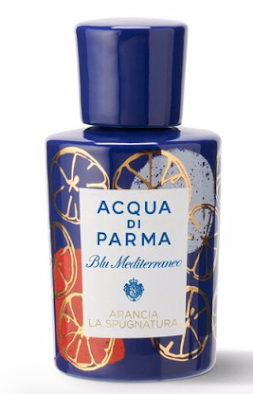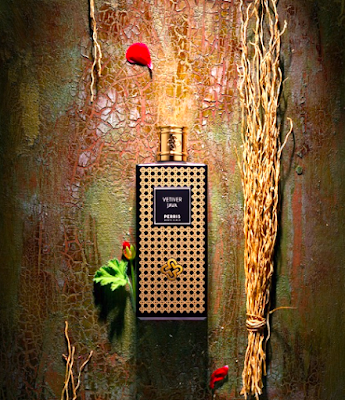Esxence - Meeting the Osmothéque (2)
This post originates here.
Then “Trèfle Incarnat” of 1896, containing amyl salicylate (left, a picture I took at Grasse Perfumery Museum) and “La Rose Jacqueminot” (Coty) with Rhodinol (geranium) and ionone (violet). Legend has it that, after trying in vain to convince the manager of a department store in Paris to sell his perfume in the cosmetic department, without being successful, he broke a bottle the ground, the perfume filled the air, and this sweet rose scent, causing a group of women to rush and ask where they could buy that wonderful fragrance. May be they were friends of charming Monsieur Coty, or maybe not, in any case by the time Coty fragrances took off and soon reached all over Europe and the US.
Then Mme De Nicolai handed the “L’Origan” (Coty), an accord of carnation, orange blossom and vanilla that was then used in many fragrances like Vanderbilt and Oscar de la Renta etc. There’s no connection between the name “L’Origan” and the smell since this is basically a woody scent.
Then “Quelques Fleur” by Robert Bienaime for Houbigant, the first with idrossicitronellal and aldehydes, and “Le Fruit Defendu” (1914) by the great couturier Paul Poiret, who gave his line Le Parfum de Rosine his daughter’s name. Le Fruit Defendu is the first true gourmand perfume in the history of perfumery, with its aldehyde C14 (ripe peach) which seems to squeak under your teeth. A scent so modern as to appear made yesterday by some young and talented perfumer. The success of this scent opened the way for other gourmand perfumes with peach note, including Guerlain's Mitsouko and Rochas Femme.
Le Chypre by Coty (1917) is rich in cyste labdanum, patchouli and oakmoss, an accord with unparalleled richness and freshness. Many people believe that the name Chypre derives from the island of Cyprus, but Madame de Nicolai explained the real story: the French word for oak nowadays is Chène, but in old French it was Kypre. The name Chypre, thus is a tribute to the most important part of the perfume formula: oakmoss.
Emeraude (Coty, 1921) has, among its main constituents, vanilla and mousse de saxe, an accord which makes it the first Oriental perfume history. It’s reported that Jacques Guerlain’s wife used to wear Coty's Emeraude. One day her husband asked her what she was wearing, and she replied "It's none of yours". Then he decided to recreate it in his own way, similar but with more vanilla, which she liked very much. It then called it “Shalimar".
Jacques Guerlain was very inspired by the work of Francois Coty. But while Coty was a self-taught composer, having studied briefly at the laboratories Chiris in Grasse, Guerlain was the third generation of chemists, he learned how to manipulate eaw materials very early from his family. Coty’s brilliant, even genial ideas (and wild, at times) served as basis -domesticated and disciplined- for some Guerlain perfumes: L’Origan was the inspiration for L'Heure Bleue, Chypre was for Mitsouko and L’Emeraude for Shalimar. (to be continued)
Then “Trèfle Incarnat” of 1896, containing amyl salicylate (left, a picture I took at Grasse Perfumery Museum) and “La Rose Jacqueminot” (Coty) with Rhodinol (geranium) and ionone (violet). Legend has it that, after trying in vain to convince the manager of a department store in Paris to sell his perfume in the cosmetic department, without being successful, he broke a bottle the ground, the perfume filled the air, and this sweet rose scent, causing a group of women to rush and ask where they could buy that wonderful fragrance. May be they were friends of charming Monsieur Coty, or maybe not, in any case by the time Coty fragrances took off and soon reached all over Europe and the US.
Then Mme De Nicolai handed the “L’Origan” (Coty), an accord of carnation, orange blossom and vanilla that was then used in many fragrances like Vanderbilt and Oscar de la Renta etc. There’s no connection between the name “L’Origan” and the smell since this is basically a woody scent.
Then “Quelques Fleur” by Robert Bienaime for Houbigant, the first with idrossicitronellal and aldehydes, and “Le Fruit Defendu” (1914) by the great couturier Paul Poiret, who gave his line Le Parfum de Rosine his daughter’s name. Le Fruit Defendu is the first true gourmand perfume in the history of perfumery, with its aldehyde C14 (ripe peach) which seems to squeak under your teeth. A scent so modern as to appear made yesterday by some young and talented perfumer. The success of this scent opened the way for other gourmand perfumes with peach note, including Guerlain's Mitsouko and Rochas Femme.
Le Chypre by Coty (1917) is rich in cyste labdanum, patchouli and oakmoss, an accord with unparalleled richness and freshness. Many people believe that the name Chypre derives from the island of Cyprus, but Madame de Nicolai explained the real story: the French word for oak nowadays is Chène, but in old French it was Kypre. The name Chypre, thus is a tribute to the most important part of the perfume formula: oakmoss.
Emeraude (Coty, 1921) has, among its main constituents, vanilla and mousse de saxe, an accord which makes it the first Oriental perfume history. It’s reported that Jacques Guerlain’s wife used to wear Coty's Emeraude. One day her husband asked her what she was wearing, and she replied "It's none of yours". Then he decided to recreate it in his own way, similar but with more vanilla, which she liked very much. It then called it “Shalimar".
Jacques Guerlain was very inspired by the work of Francois Coty. But while Coty was a self-taught composer, having studied briefly at the laboratories Chiris in Grasse, Guerlain was the third generation of chemists, he learned how to manipulate eaw materials very early from his family. Coty’s brilliant, even genial ideas (and wild, at times) served as basis -domesticated and disciplined- for some Guerlain perfumes: L’Origan was the inspiration for L'Heure Bleue, Chypre was for Mitsouko and L’Emeraude for Shalimar. (to be continued)




Commenti
It would be SO like him to arrange such a little stunt! Still, it worked ;)